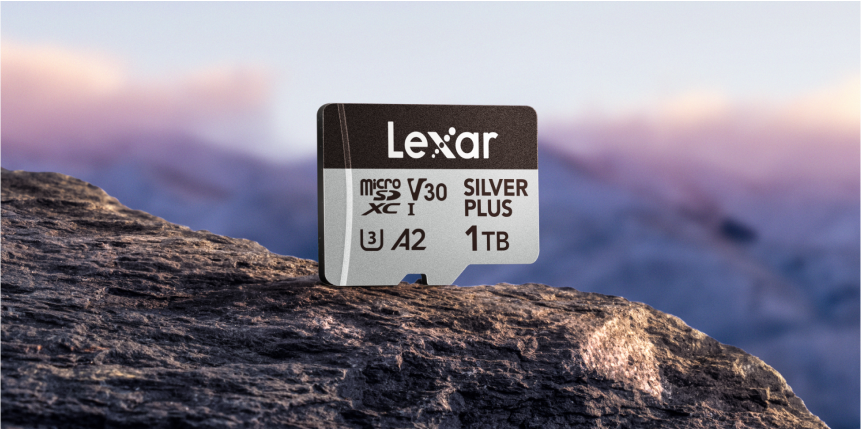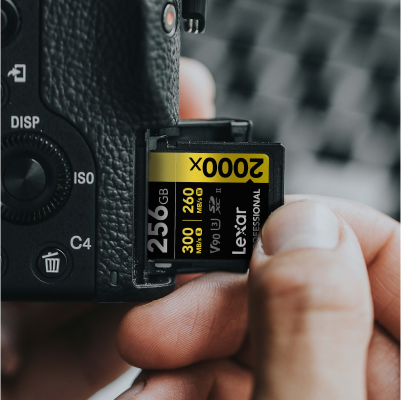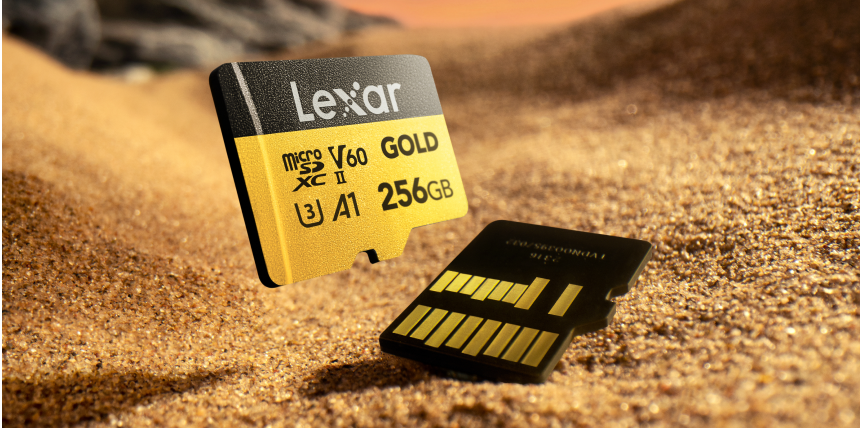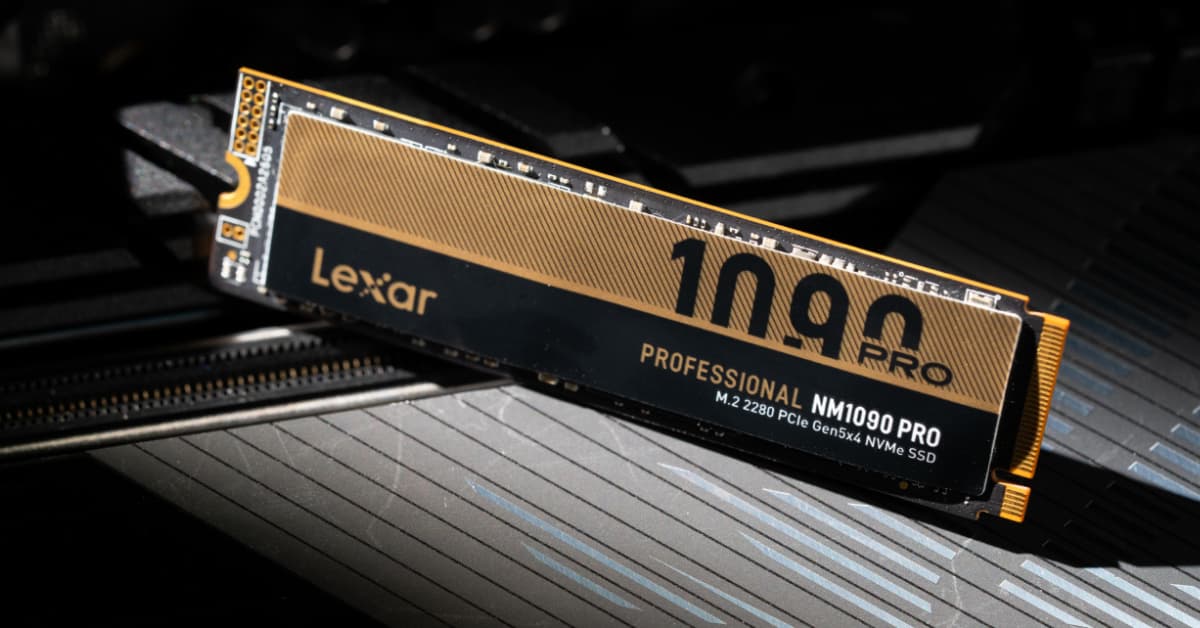
If you’ve ever shopped for a memory card, you’re familiar with microSD card sizes. These little storage devices come in different capacities to handle your photos, videos, apps, and games.
Picking the right card involves understanding their specs and matching them to your needs. Let’s break it down and find the perfect microSD card for you.
microSD Card Types
microSD cards share the same standards as full-sized SD cards and are categorized by their storage capacity. Let’s explore the different types:
SD (SDSC – Secure Digital Standard Capacity)
These cards store up to 2GB of data and are largely outdated. They use older file systems like FAT12, FAT16, and FAT16B. You’ll rarely encounter these cards unless you’re using very old devices.
SDHC (Secure Digital High Capacity)
SDHC cards became the new standard, offering capacities beyond 2GB and up to 32GB. They use the FAT32 file system, which is suitable for basic use but not ideal for large files like high-resolution videos.
While not as large as the SDXC format, they are still common because many devices can read this format. You will find most standard SD cards are SDHC.
SDXC (Secure Digital Extended Capacity)
For those needing serious storage space, SDXC cards are the way to go, allowing capacities from 32GB up to a massive 2TB. These cards use the exFAT file system.
ExFAT is specifically designed for flash storage and high data transfer rates, making it perfect for handling large video files and continuous recording. ExFAT will likely remain the preferred file system for the foreseeable future.
SDUC (Secure Digital Ultra Capacity)
SDUC cards shatter the 2TB limit, offering storage capacities reaching a staggering 128TB.
However, they are still relatively new, and device compatibility is catching up. Despite this, their future potential for managing colossal amounts of data is undeniable.
Understanding microSD Card Sizes
While most people associate “microSD card sizes” with storage capacity, it can also refer to physical size. The SD family includes three sizes:
- Standard SD Card: 32 x 24 x 2.1 mm (thickness ranges from 1.4 to 2.1mm)
- MiniSD Card: 21.5 x 20 x 1.4 mm
- microSD Card: 15 x 11 x 1 mm
MiniSD cards have largely become obsolete. However, understanding these size differences is helpful when working with older technology or specialized equipment.
What About microSD Card Speeds?
Understanding a microSD card’s capacity is crucial, but speed is equally important. SD cards use speed classes to help you determine the best card for different purposes. Essentially, these classes indicate the minimum sustained write speed of a microSD card.
Speed Class Ratings
The simplest indicator is the “Class” number displayed on the card. You might come across Class 2, Class 4, Class 6, or Class 10 cards. Class 2, with its 2MB/s speed, is suitable for basic tasks, while Class 10, offering 10MB/s, can handle up to 4K video.
UHS (Ultra High Speed) Classifications
UHS classifications are more common with SDHC and SDXC cards. These cards utilize a different bus system for data transfer, enabling two speed modes.
- UHS-I offers speed modes: U1 and U3.
- U1: Matches Class 10 speeds.
- U3: Triples the speed to 30MB/s, ideal for 4K recordings at high frame rates.
- UHS-II further boosts speeds with an extra row of contacts, allowing for simultaneous data sending and receiving. This makes it possible to record high-quality 8K video smoothly.
- UHS-III pushes the boundaries even further, but similar to SD Express, these newer technologies lack widespread support as many devices do not fully support their capabilities.
microSD Express
Utilizing PCI Express lanes, similar to those found in high-speed SSDs, microSD Express offers unprecedented data transfer speeds. This makes it a perfect choice for professionals in fields such as photography and filmmaking.
microSD Express comes with its own Speed Class Ratings, using labels like SDE600 or SDE300, where the numbers represent the minimum sustained write speeds in MB/s.
Keep in mind that while SD Express promises incredible speeds, your device needs to fully support it to unlock its full potential.
Application Performance Class
This classification is crucial for applications beyond data storage, such as using your microSD card as working storage for your smartphone or tablet. The rating uses “A” classifications: A1 and A2, focusing on the card’s ability to handle random data instructions, measured in IOPS (input/output operations per second).
If you use demanding apps or play graphics-intensive games on your device, paying attention to these A ratings can help you select a card that won’t slow you down.
Video Speed Class
As the name suggests, this classification is specifically designed for video recording. It utilizes a straightforward “V” rating system – the higher the number, the better suited the card is for recording high-resolution videos.
- V10 (10MB/s): Suitable for high-resolution photography and Full HD (1080p) videos.
- V30 (30MB/s): Ideal for 4K video recording and fast-action photography.
- V60 (60MB/s): Ensures smooth 4K video recording.
- V90 (90MB/s): Meets the demands of 8K video recording at high frame rates.
With a quick glance at the rating label, you can quickly determine the intended purpose of that particular SD card.
Finding the Right microSD Card for You
Choosing the right microSD card often comes down to three general use cases.
General Use / Best Value for the Price
Many people want to expand their phone or tablet storage to accommodate everyday photos, home videos, music files, and other data. A microSD card, with 256GB capacity and a UHS-I U3 speed rating, offers an excellent balance of value and performance, catering to general storage requirements.


If your device requires a standard SD card size, our Professional 2000x SDHC™/SDXC™ UHS-II Card GOLD Series is an excellent option.
When evaluating your options, be mindful of speed ratings. Some seemingly similar cards might boast identical read speeds but fall short in write speeds, which are crucial for smooth recording experiences.
Performance microSD
For those who use demanding smartphone apps, frequently record high-resolution videos, or need to process data quickly, a performance-oriented card becomes essential.

When it comes to demanding smartphone usage, our Professional GOLD microSDXC™ UHS-II Card excels. This card offers exceptional application performance and rapid read/write speeds. With this card, you can effortlessly run multiple apps, enjoy intensive mobile games, and even edit videos directly on your device without experiencing slowdowns.


If your primary focus is video recording or action cameras, the Professional SILVER PLUS microSDXC™ UHS-I Card delivers robust performance.
For capturing seamless 4K footage, UHS-II V60-rated cards are highly recommended. If you’re seeking top-tier performance, consider UHS-II-rated microSD cards.
How to Avoid Fake microSD Cards
A good starting point for avoiding counterfeit microSD cards is to purchase them from authorized retailers or directly from the brand’s online store. The SD Card Association strongly advises buying from trusted dealers or their official websites to ensure you’re receiving genuine, high-quality SD cards.
While it’s tempting to chase bargains, prioritizing safety and opting for established brands when it comes to memory cards will likely save you from headaches down the road.
To verify the authenticity of your microSD card, use a free program to check if the actual storage capacity matches the advertised capacity. For Windows users, H2testw is a reliable option. If you’re using a Mac or Linux, F3 is an excellent alternative.
These programs write data to your card and then read it back, confirming that the available storage aligns with what you paid for. When inspecting the microSD card, look for visual cues of counterfeiting. Pay close attention to the printing quality – is it blurry, sloppy, or misaligned? Additionally, assess the card’s packaging – does it appear flimsy or of inferior quality?
These signs might indicate a counterfeit product. Evaluate the card’s performance. Does it feel significantly slower than expected based on its advertised speed class? This could be a red flag that something is amiss. Don’t hesitate to reach out to the brand’s customer support if you have any doubts or encounter issues – legitimate companies are usually happy to assist.
To safeguard your precious memories and valuable data, always opt for authentic, high-quality memory cards. When selecting microSD card sizes, it’s always wise to choose a capacity larger than you anticipate needing – this ensures you won’t find yourself running out of storage at a critical moment. If you frequently travel for work, keeping spare cards in a protective storage case is advisable for organization and protection.
Elevate Your Digital Experience with the Right microSD Card
Whether you’re capturing life’s precious moments or recording 4k/8k video, understanding microSD card sizes and their specifications is crucial for ensuring optimal performance. Remember to pay close attention to speed ratings, ranging from the basic Speed Class numbers to the more advanced UHS and Video Speed Class ratings, as these will guide you toward the most suitable card for your specific needs.
With microSD card sizes reaching an impressive 1TB, you have a wide array of options at your disposal, catering to various tasks and budgets. By carefully considering the factors discussed in this comprehensive guide, you’ll be well-equipped to select the perfect microSD card that aligns with your creative passions and technological requirements.
FAQs about microSD Card Sizes
What sizes do microSD cards come in?
microSD cards offer a range of storage capacities, typically ranging from 1GB to 1TB. While less common, you can still find 2GB microSD cards and ultra-high-capacity 2TB cards. Newer SD standards support capacities of up to 128TB; however, these massive cards are not widely available yet.
Despite their storage differences, all current microSD cards share the same physical dimensions: 15 x 11 x 1 mm.
Are all microSD cards the same physical size?
Yes, all microSD cards currently available have the same physical dimensions (15 x 11 x 1 mm), although their storage capacities and speeds can differ significantly. This standardization ensures compatibility across a wide range of devices.
What is the largest capacity microSD card?
As of now, the largest readily available microSD card boasts a capacity of 1TB. While newer SD standards, specifically SDUC, support capacities reaching a massive 128TB, these cards have yet to hit the consumer market.
Is there a difference in microSD cards?
Yes, microSD cards can differ significantly in terms of storage capacity, speed, and application performance class. The ideal card for you depends on your intended use case, the devices you’ll be using it with, and the level of performance you require.




